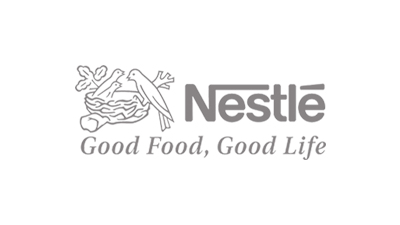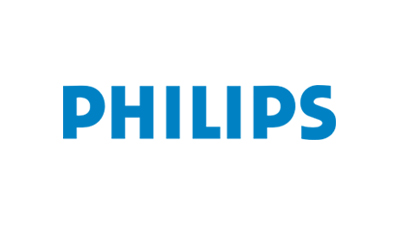Benign prostatic hyperplasia (BPH) is a prostate enlargement caused by excessive cell growth in the prostate. BPH is a benign (non-cancerous) prostate condition. Non-cancerous conditions are not usually fatal and do not spread (metastasize) to other body parts. BPH doesn't raise the risk of prostate cancer; unless it manifests symptoms, BPH isn't considered a health issue. Almost all men will have some prostate growth by the age of 70. Getting older, having more belly fat (also known as abdominal obesity), and not getting enough exercise to raise the risk of developing BPH. The treatment option for BPH includes surgeries such as transurethral resection of the prostate (TURP), open prostatectomy, and minimally invasive treatments such as transurethral needle ablation (TUNA). In minimally invasive treatments such as radiofrequency ablation, laser therapy, and implants, benign prostatic hyperplasic devices are used. According to our (Global Info Research) latest study, the global Benign Prostatic Hyperplasia Equipment market size was valued at USD million in 2021 and is forecast to a readjusted size of USD million by 2028 with a CAGR of % during review period. The influence of COVID-19 and the Russia-Ukraine War were considered while estimating market sizes. This report is a detailed and comprehensive analysis for global Benign Prostatic Hyperplasia Equipment market. Both quantitative and qualitative analyses are presented by manufacturers, by region & country, by Type and by Application. As the market is constantly changing, this report explores the competition, supply and demand trends, as well as key factors that contribute to its changing demands across many markets. Company profiles and product examples of selected competitors, along with market share estimates of some of the selected leaders for the year 2022, are provided. Key Features: Global Benign Prostatic Hyperplasia Equipment market size and forecasts, in consumption value ($ Million), sales quantity (K Units), and average selling prices (US$/Unit), 2017-2028 Global Benign Prostatic Hyperplasia Equipment market size and forecasts by region and country, in consumption value ($ Million), sales quantity (K Units), and average selling prices (US$/Unit), 2017-2028 Global Benign Prostatic Hyperplasia Equipment market size and forecasts, by Type and by Application, in consumption value ($ Million), sales quantity (K Units), and average selling prices (US$/Unit), 2017-2028 Global Benign Prostatic Hyperplasia Equipment market shares of main players, shipments in revenue ($ Million), sales quantity (K Units), and ASP (US$/Unit), 2017-2022 The Primary Objectives in This Report Are: To determine the size of the total market opportunity of global and key countries To assess the growth potential for Benign Prostatic Hyperplasia Equipment To forecast future growth in each product and end-use market To assess competitive factors affecting the marketplace This report profiles key players in the global Benign Prostatic Hyperplasia Equipment market based on the following parameters - company overview, production, value, price, gross margin, product portfolio, geographical presence, and key developments. Key companies covered as a part of this study include KARL STORZ SE & Co. KG, Richard Wolf GmbH, Olympus Corporation, Urologix, LLC. and Boston Scientific Corporation, etc. This report also provides key insights about market drivers, restraints, opportunities, new product launches or approvals, COVID-19 and Russia-Ukraine War Influence. Market Segmentation Benign Prostatic Hyperplasia Equipment market is split by Type and by Application. For the period 2017-2028, the growth among segments provides accurate calculations and forecasts for consumption value by Type, and by Application in terms of volume and value. This analysis can help you expand your business by targeting qualified niche markets. Market segment by Type Resectoscopes Radiofrequency Ablation Devices Urology Lasers Prostatic Stents Implants Others Market segment by Application Hospitals Clinics Others Major players covered KARL STORZ SE & Co. KG Richard Wolf GmbH Olympus Corporation Urologix, LLC. Boston Scientific Corporation Butterfly TELEFLEX Incorporated OmniGuide Holdings, Inc. Convergent Laser Technologies ProArc Market segment by region, regional analysis covers North America (United States, Canada and Mexico) Europe (Germany, France, United Kingdom, Russia, Italy, and Rest of Europe) Asia-Pacific (China, Japan, Korea, India, Southeast Asia, and Australia) South America (Brazil, Argentina, Colombia, and Rest of South America) Middle East & Africa (Saudi Arabia, UAE, Egypt, South Africa, and Rest of Middle East & Africa) The content of the study subjects, includes a total of 15 chapters: Chapter 1, to describe Benign Prostatic Hyperplasia Equipment product scope, market overview, market estimation caveats and base year. Chapter 2, to profile the top manufacturers of Benign Prostatic Hyperplasia Equipment, with price, sales, revenue and global market share of Benign Prostatic Hyperplasia Equipment from 2017 to 2022. Chapter 3, the Benign Prostatic Hyperplasia Equipment competitive situation, sales quantity, revenue and global market share of top manufacturers are analyzed emphatically by landscape contrast. Chapter 4, the Benign Prostatic Hyperplasia Equipment breakdown data are shown at the regional level, to show the sales quantity, consumption value and growth by regions, from 2017 to 2028. Chapter 5 and 6, to segment the sales by Type and application, with sales market share and growth rate by type, application, from 2017 to 2028. Chapter 7, 8, 9, 10 and 11, to break the sales data at the country level, with sales quantity, consumption value and market share for key countries in the world, from 2017 to 2022.and Benign Prostatic Hyperplasia Equipment market forecast, by regions, type and application, with sales and revenue, from 2023 to 2028. Chapter 12, market dynamics, drivers, restraints, trends, Porters Five Forces analysis, and Influence of COVID-19 and Russia-Ukraine War. Chapter 13, the key raw materials and key suppliers, and industry chain of Benign Prostatic Hyperplasia Equipment. Chapter 14 and 15, to describe Benign Prostatic Hyperplasia Equipment sales channel, distributors, customers, research findings and conclusion.
1 Market Overview 1.1 Benign Prostatic Hyperplasia Equipment Introduction 1.2 Market Estimation Caveats and Base Year 1.3 Market Analysis by Type 1.3.1 Overview: Global Benign Prostatic Hyperplasia Equipment Consumption Value by Type: 2017 Versus 2021 Versus 2028 1.3.2 Resectoscopes 1.3.3 Radiofrequency Ablation Devices 1.3.4 Urology Lasers 1.3.5









